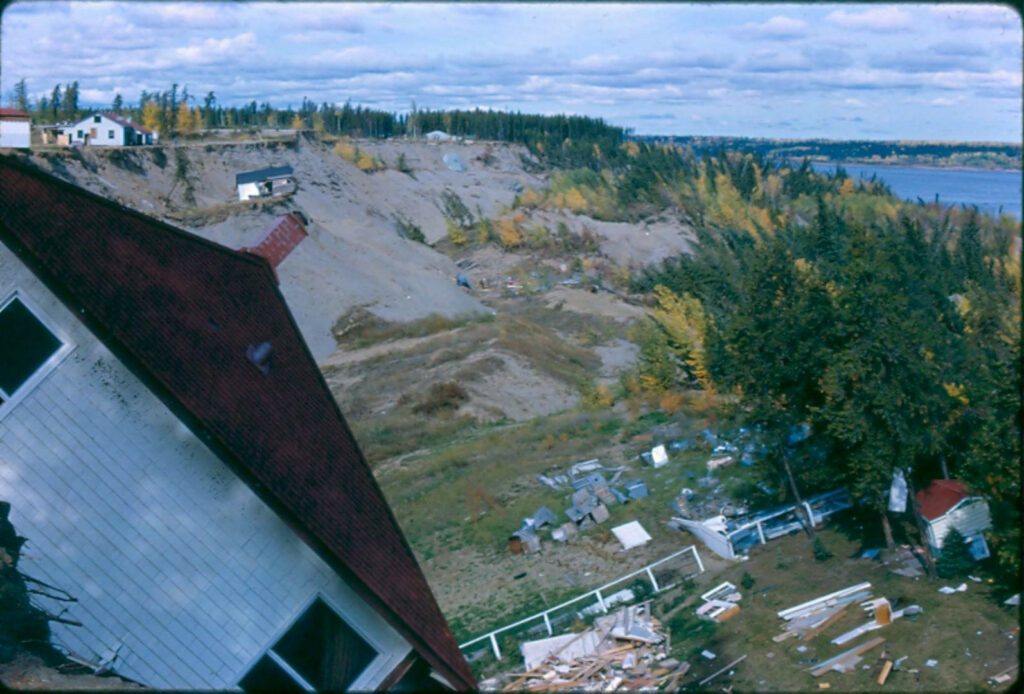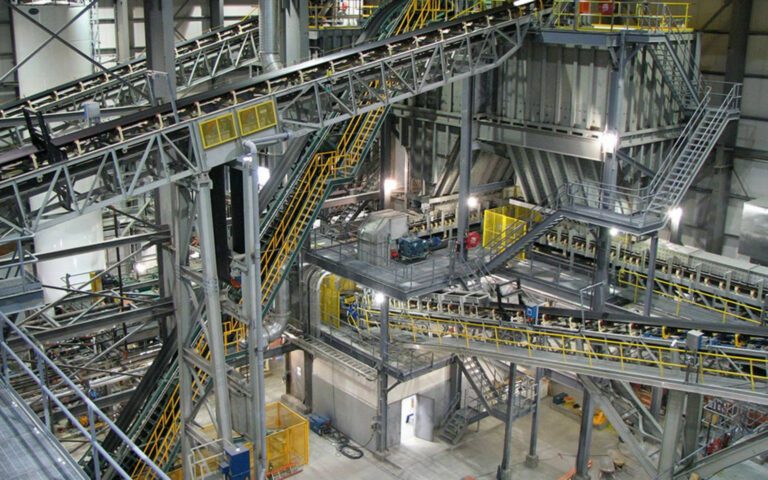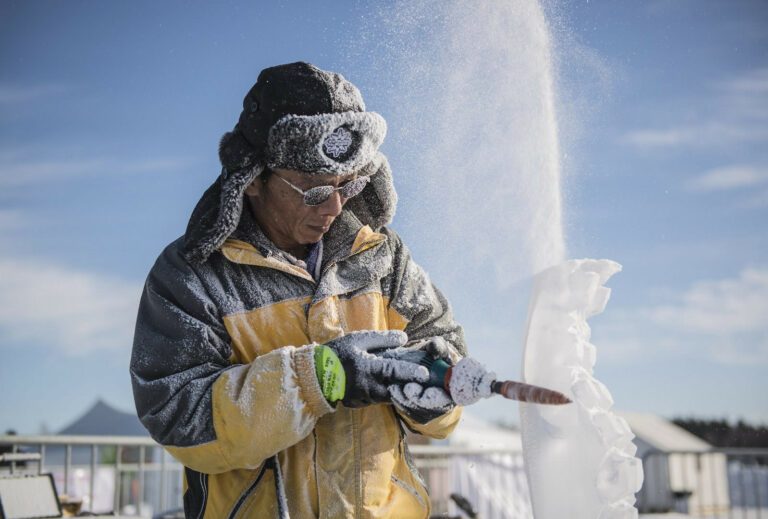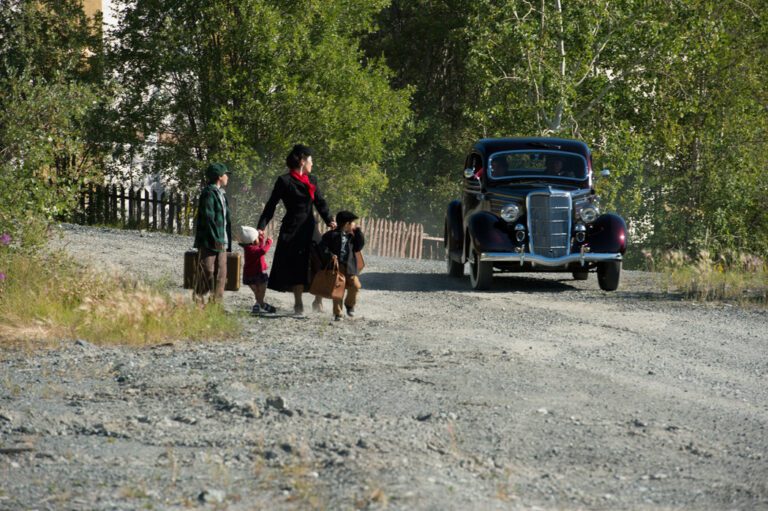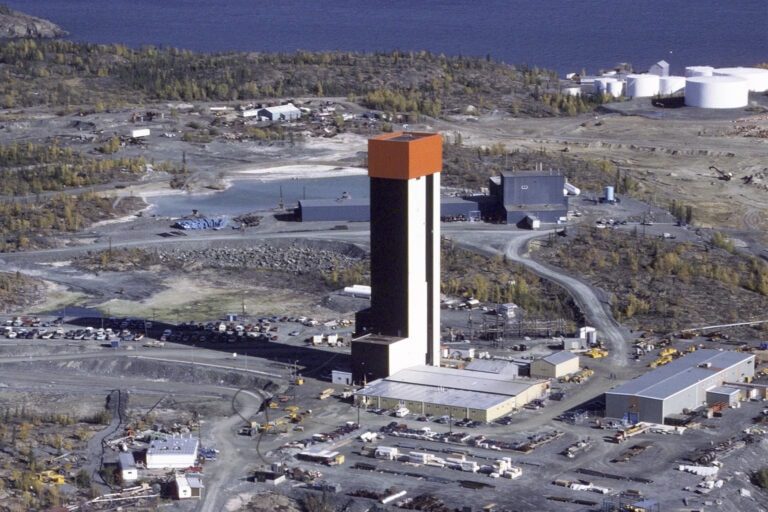“It was almost like watching a big snake crawling underneath the ground as the wave went by.”
Toni Heron still has nightmares about the day her neighbour’s house disappeared from the horizon, swallowed up by a sudden collapse of the same earth she had spent her childhood playing upon along the river near Fort Smith.
In the dreams, she is walking along the ever-approaching edge, threatened by an inevitable plunge into the river below.
It was August 9, 1968. Heron, then 20 years old, was pushing a baby carriage containing her oldest daughter, on the way to see her husband play a game of ball in the nearby field.
It was a pleasantly sunny day in a summer that had been dominated by heavy rains as she navigated what was then the main street at the top of the steep riverbank. Her neighbourhood, known as the Village, was a row of houses perched along the top of the hill overlooking the Slave River.
She remembers passing the Fergusons’ house, kitty-corner from her mom’s. All was as usual, but for their little dog, who was running frantically up and down their front steps.
As Heron rounded the corner to her parents’ place, she heard what sounded like a thud.
“It was a noise like when you throw sand into a hole.”
She looked up. The telephone lines were swaying. She thought maybe her neighbour had accidentally hit a pole with his truck.
Rushing to the corner, she went to inspect the road to see what had happened.
What she saw was unbelievable: the Fergusons’ house was gone.
“I thought, ‘Oh my god, who pulled the Fergusons’ house away?’ I was in shock.”
Running out the door, she made her way to the edge where the house had stood and looked out across the riverbank as it curved below Fort Smith.
“As I got to the edge of the hill, I could see down to my right the ground just giving way [for a] long way,” she says.
Sirens began to blare from Town Hall.
“After that, it was just chaos.”
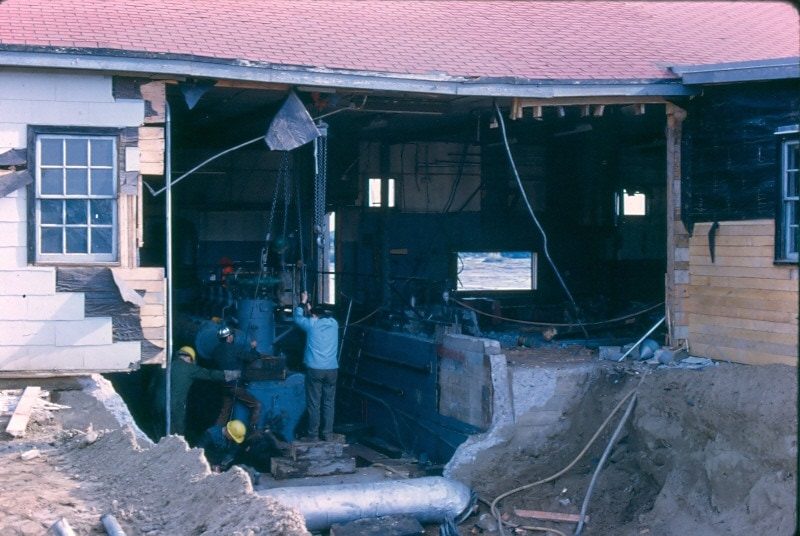
Residential buildings weren’t the only ones affected: the NTPC buildings were ripped open
In the immediacy of the event, families from the Village were packed up and moved away from the edge, which would continue to crumble over the following days as the ground attempted to stabilize itself.
Heron’s family, along with many others, were taken to a residence in the government side of town, where “the ladies” — unmarried women who worked as secretaries and the like — lived in an apartment building known jokingly around town as “the harem.”
But even though the building had not been impacted by the landslide, it was still too close to the river bank for Heron’s comfort.
“What a place to put us after the slide!” Heron recalls. “I didn’t get any sleep for a week. I had to get out of there. It was just such a… I don’t know how to describe it. It was very, very scary. Finally, my husband’s grandma said we could move to her place. Then I was able to get some rest.”
In the following days, another house would fall off the eroding edge. It took time, but crews of diggers would eventually find the body of Mrs. Ferguson, who had been in her home when it was completely swallowed by sand.
“It was very sad. She was such a wonderful lady,” Heron says. “To have this happen made a big impact, not only on the families that lived around the area, but everyone else in the community.”
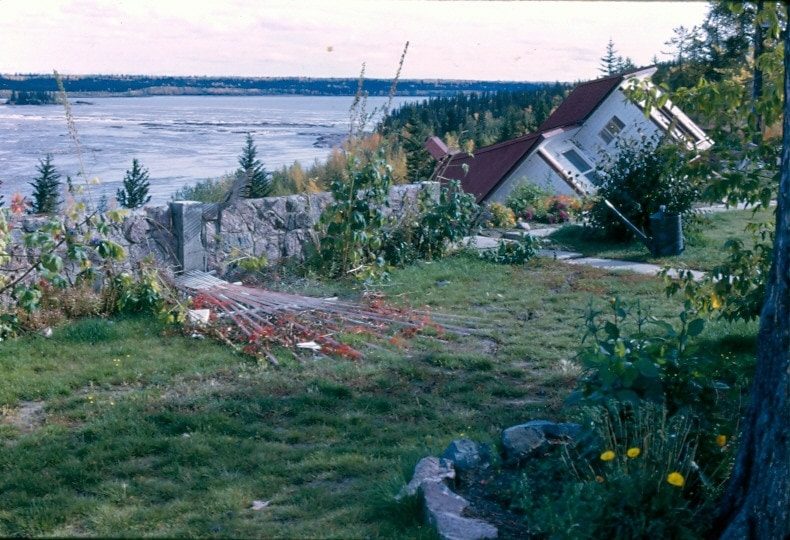
Heron had lived in the neighbourhood since she and her husband purchased their little house for $500 in 1960, but spent much of her childhood as well playing on the river’s edge. The slide zone, as it’s now called, was then a hot spot for community gatherings. At the shore, float planes would land, boats would launch and families would get together for picnics, fishing and berry picking.
“Where it slid was almost like the main road in the community,” Heron says. “A big baseball diamond was right in that area.”
Today, the area serves mainly as a place for tobogganing in the winter. The only structures at the top of the ridge now are a walking path, a lookout for tourists to eye the Rapids of the Drowned, and a few signs that say ‘Unstable Edge’.
The homes and buildings, including the Power Commission’s headquarters, that lined the area either succumbed to gravity or were hauled away to another spot in town. Many of the Village’s homes ended up plunked down somewhat haphazardly on Calder Avenue. Though the street is now one of the town’s main thoroughfares connecting to Aurora College and the high school, at the time it was simply forest that needed to be cleared. Others relocated to the new Village, further southwest.
While some people received compensation, Heron would never be paid back the losses on her own house, which was eventually moved but rendered uninhabitable in the process. It now serves as a garage in her parents’ yard, and she and her family were put in a low-cost rental house.
“When people were moved, they were moved all over the place in different areas,” Heron says. “I think they could have done a lot more for people who lost their homes. They just took homes and plopped them places and that was that.”

Heron says she is still awed by the suddenness of the incident, which descended upon the community with no warning. Apart from the actions of the Fergusons’ little dog, which Heron now believes could sense the oncoming danger, there was nothing to foreshadow what was about to take place.
“I was walking right there and I did not feel any movement in the ground at all,” Heron says.
The whole thing took less than five minutes.
Even after the slide had occurred, there was an apparent lack of visible aftermath. Apart from the leaning power poles and half-consumed houses, it was as if the landscape was pretending it had always been in that position. Its brazen disregard was disconcerting, Heron says.
“It all happened so fast, and there was no dust. You could not see any dust in the air.”
Since 1968, residents and politicians have been worriedly calling for the territorial government to take action on slide-zone stabilization in Fort Smith to prevent another similar event from taking place and possibly swallowing the community’s recently renovated Centennial Arena or cemetery.
Looking at the erosion that stretches across the river bank well beyond Fort Smith, Heron worries about what could happen and who might be in the wrong place at the wrong time if it does.
“It affected the whole town, just losing a member of the community, because it was so devastating and such a shock,” she recalls. “Knowing this landslide could do what it did…if it keeps eroding, will it happen again? I still have nightmares after all these years, of what took place.”

